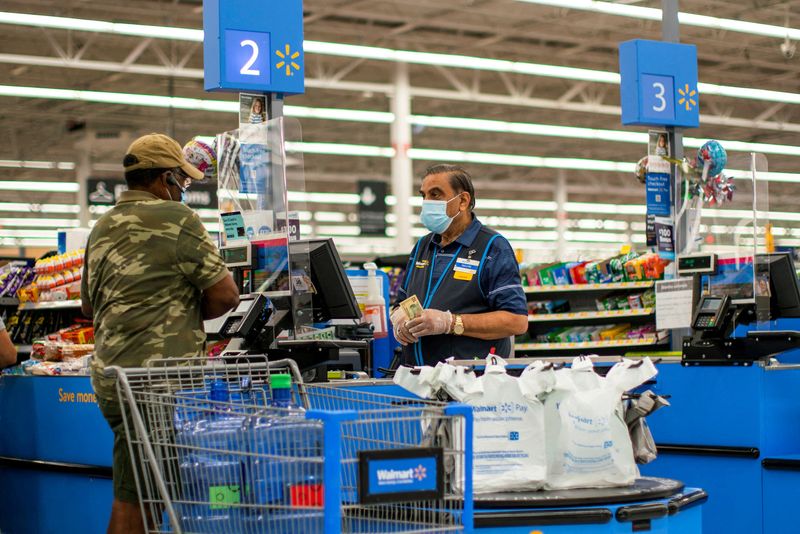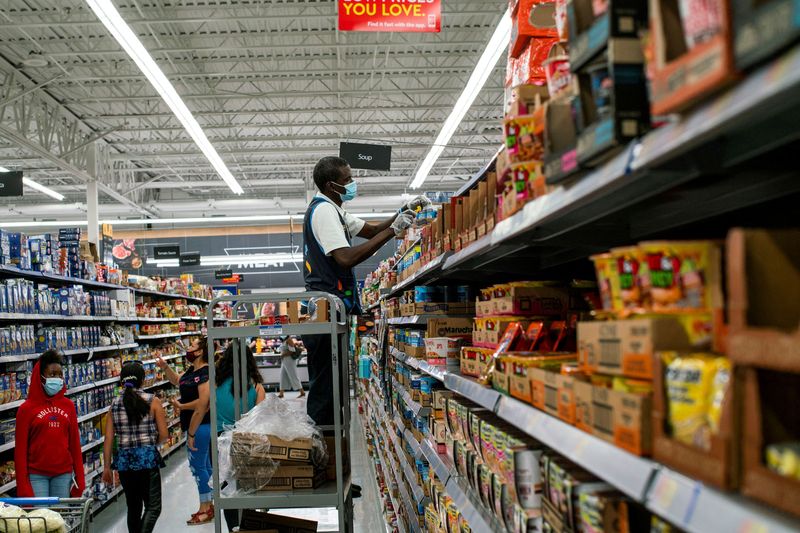(Reuters) -Walmart Inc workers in the United States who must isolate or who have tested positive for COVID-19 will receive one week of paid leave instead of two under a new policy that aligns with a change in U.S. health guidance.
A memo, seen by Reuters, sent on Tuesday to U.S. hourly store employees and long-haul drivers said COVID-19 positive workers and those required to quarantine – by Walmart, a health care provider or a government agency – are eligible for one work week of paid time off.
The company’s guidelines follow the U.S. Centers for Disease Control and Prevention’s updated recommendations last week that people isolate for five days after a COVID-19 infection, instead of 10 days.
The retailer, the largest private employer in the United States with about 1.6 million workers, is among the first major retailers to reduce paid leave for COVID-19, and could serve as a bellwether for other major employers.
The move comes as a spike in COVID-19 cases is causing significant labor shortages across an industry that is already battling supply-chain snarls, product shortages, rising inflation and rocketing transportation costs.
A Walmart spokesperson confirmed the COVID-leave policy change. Workers who continue to be sick can potentially receive additional COVID-related pay for up to 26 weeks.
The spokesperson added that Walmart was asking corporate employees to work primarily from home until Jan. 30, rather than Jan. 10 previously announced.
The company operates 600 Sam’s Club stores and more than 4,700 Walmart U.S. stores in the United States. On Monday, the company said it temporarily shut 60 stores in COVID-19 hot spots in December to sanitize them against the virus.
“A lot of people don’t want to come into work as they’re either afraid or getting coronavirus,” Peter Naughton, 46, a Walmart electronics salesperson in Baton Rouge and member of labor non-profit United for Respect. “I can’t afford not to come to work.”
Like other mass retailers, Walmart has witnessed a boom in sales during the pandemic as more people shopped for groceries and home goods. The company raised its full-year annual sales and profit forecast in November but disappointed investors with higher labor and transportation costs that eroded margins.
The company’s stock is nearly flat over the past one year compared to the broader S&P 500 retailing index’s 20.6% rise over the same period.
(Reporting by Siddharth Cavale in Bengaluru and Richa Naidu in Chicago; Editing by Nick Zieminski and Cynthia Osterman)
























